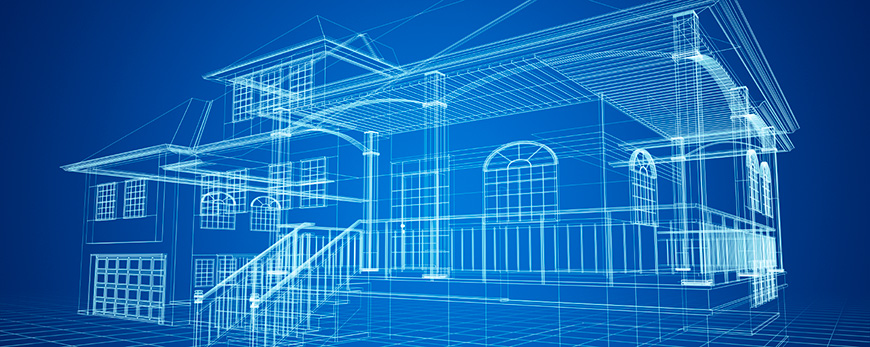Discover Cutting-edge Designs with Leading CDA Architects for Your Following Job
Discover Cutting-edge Designs with Leading CDA Architects for Your Following Job
Blog Article
Comprehending the Collaborative Process Between Designers and Designers in Modern Construction Projects
The collective process between designers and engineers is necessary in modern-day construction projects, as it balances style intent with engineering usefulness. Discovering these dynamics reveals insights that might significantly impact task results and overall market criteria.
The Significance of Cooperation
The joint synergy between designers and engineers is necessary for the successful realization of any kind of building and construction job. This partnership combines unique proficiency and viewpoints, making it possible for the integration of ingenious style with functional design remedies. By working together, engineers and designers can make sure that a job not just meets visual and functional requirements yet additionally adheres to security, sustainability, and budgetary restrictions.
Collaboration cultivates a common vision, helping with the alignment of objectives and assumptions from the start. This positioning is important in resolving potential challenges and mitigating risks that could emerge during the task lifecycle. In addition, a joint method permits the effective allotment of sources, optimizing both time and price.
The significance of cooperation encompasses the iterative procedure of style and construction, where comments from designers can notify architectural decisions, causing even more feasible and lasting designs. On the other hand, architects can inspire designers to assume artistically concerning how to attain architectural integrity without endangering imaginative intent. Ultimately, the joint partnership between designers and designers is not simply helpful; it is essential to the creation of high-grade, functional, and cutting-edge developed environments that satisfy the requirements of society.
Interaction Methods and Tools
Reliable communication methods and devices are important for promoting partnership between architects and designers throughout the task lifecycle. Developing clear networks of interaction is crucial to guarantee that all employee are aligned with job purposes, timelines, and obligations. Normal conferences, both in-person and online, give chances for stakeholders to go over progress, address issues, and make informed choices.
Making use of task management software program, such as BIM (Building Info Modeling) systems, enhances collaboration by making it possible for real-time sharing of layout adjustments and technological specifications. These tools promote openness, permitting engineers and designers to imagine modifications and analyze their effect on the total task.

Shared Objectives and Task Vision

Developing shared objectives involves open discussion and an extensive understanding of each technique's payments. Engineers typically concentrate on style intent, spatial connections, and individual experience, while designers highlight architectural stability, systems functionality, and compliance with policies (cda architects). When these viewpoints are aligned, the outcome is a cohesive project that sticks to both imaginative goals and technological feasibility
Furthermore, a distinct project vision fosters accountability amongst staff member, urging each participant to take possession of their duty in achieving the desired result. Normal check-ins and collaborative workshops can even more strengthen this dedication, permitting modifications to be made as the job develops. Inevitably, a shared vision not just boosts synergy yet additionally elevates the high quality of the final deliverable, Recommended Reading causing successful task conclusion.
The Role of Innovation
Leveraging modern technology has come to be necessary in boosting collaboration between designers and designers. Structure Details Modeling (BIM) stands out as an essential technology, enabling both designers and engineers to develop comprehensive 3D models that encapsulate style intent and architectural honesty.
Moreover, cloud-based platforms allow seamless collaboration, allowing job stakeholders to Homepage accessibility and update job data from anywhere. This promotes a society of openness and accountability, as modifications can be tracked and assessed in real-time. Additionally, mobile applications further enhance communication, providing on-site groups with immediate accessibility to job specs and updates.
Emerging innovations such as expert system and artificial intelligence are likewise beginning to contribute in anticipating evaluation, helping groups determine potential concerns prior to they arise. Eventually, the function of innovation in architecture-engineering partnership not only enhances process efficiencies but additionally improves technology, leading to even more effective project end results. By welcoming these technological advancements, engineers and engineers can ensure an extra cohesive and effective collaborative procedure throughout the construction lifecycle.
Study in Effective Collaborations
Countless study illustrate the profound effect of reliable collaborations in between engineers and designers on task outcomes. One significant example is the partnership on the High Line in New York City City, where landscape architects, designers, and metropolitan organizers worked together to transform a deserted railway into a vivid public park. This multidisciplinary technique not just boosted the aesthetic quality but also made sure structural safety and environmental sustainability.
One more excellent instance is the layout and construction of the Sydney Concert Hall. The partnership between architect JÃ ¸ rn Utzon and architectural engineer Ove Arup exemplified cutting-edge analytic. Their This Site partnership enabled the renowned shell-like layout while dealing with complicated design challenges, eventually resulting in an ageless building masterpiece.
The Burj Khalifa in Dubai further shows the importance of joint initiatives. cda architects. The combination of architecture and design expertise allowed the task group to achieve unprecedented heights while adhering to security policies and visual vision
These instances emphasize the value of interaction, trust fund, and shared objectives. In today's complex building and construction atmosphere, such collaborations are important to browsing difficulties and providing jobs that meet both useful and visionary objectives.
Final Thought
Finally, the partnership in between architects and engineers is important for the success of contemporary building jobs. Reliable communication techniques, a shared task vision, and the assimilation of innovative technologies are vital parts that promote this partnership. By promoting a culture of accountability and leveraging devices such as Structure Details Modeling (BIM), teams can navigate task complexities, guaranteeing that aesthetic, functional, and sustainability objectives are attained. Eventually, this synergy brings about ingenious and successful task results.
Report this page